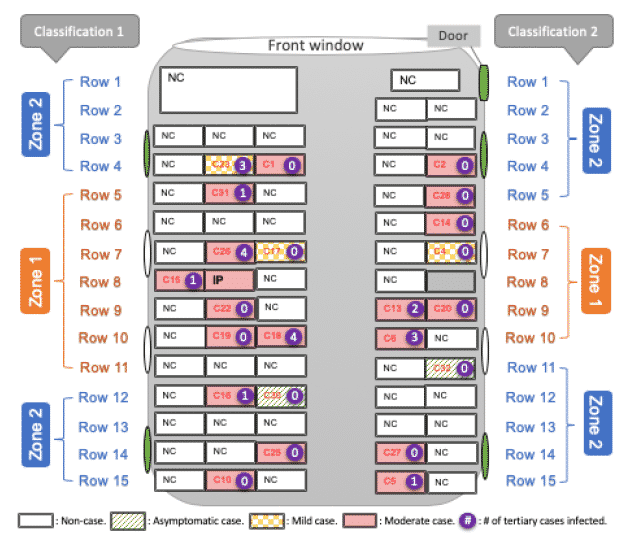Amidst the flurry of Covid-19 pandemic statistics, it’s easy to forget that the virus doesn’t spread mechanically throughout the population. After all, research shows that 80 percent of transmissions come from just 10 percent of coronavirus carriers. Instead, clusters are usually the result of a particularly (un)favourable set of circumstances.
Four examples of coronavirus clusters
- The Night Out in Seoul
On 30 April, an unknowing Covid-19 carrier went bar hopping in Seoul’s Itaewon nightspot, dropping in at five different bars and clubs over the course of the night. There were 187 subsequent positive cases among people who were out in Itaewon that night; 93 went to one of the five venues visited by the original carrier.
- The Choir in Washington State
On 10 March, 61 members of a choir met for Tuesday evening practice in Skagit County, WA. The source carrier is unknown, but there were ultimately 32 confirmed cases and 20 probable cases linked to the group, according to the US Center for Disease Control. Researchers believe that standing side-by-side for 2.5hr while singing exacerbated the normal risk of airborne transmission of the virus.
- The Bus Ride in Zhejiang Province
A study carried out in Zhejiang, two provinces to the east of Wuhan, examined two outbreaks. One occurred on a 100-minute round-trip bus ride to an outdoor Buddhist worship event.
The source patient, who had just returned from Wuhan, travelled on a bus with 66 other passengers. Each passenger had their own personal seat both ways.
Ultimately, 23 people on the bus ride were infected. Below, you can also see the number of people that each of those people went on to infect.

Researchers blamed the recirculated air system on the bus, because only one patient sitting next to an openable window was infected. That was the patient sitting directly next to the source patient.
- The Zhejiang Conference Room
This hypothesis about the danger of recirculated air was borne out in the study of the second Zhejiang outbreak, in which 30 people spent three consecutive days in a small conference room with only recirculated air. Of the 29 people exposed to the source carrier at the conference, 15 were infected.
All of this goes to show that if you’re not tucked away in your own home, the next safest place to be in a pandemic is out in the open air.